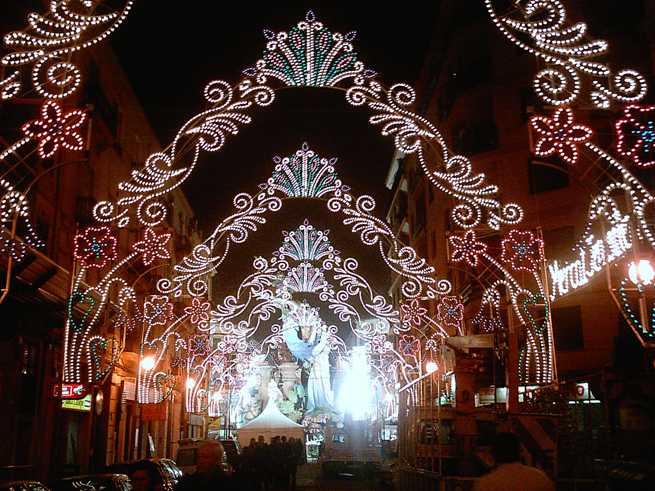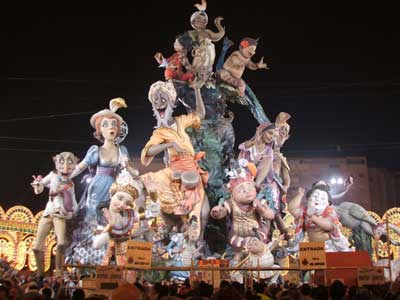Next week we drive down the coast of Spain to Valencia. It is around a seven hour drive through the golden rolling hills of the eastern coast of Spain that are so reminiscent of the central coast of California. One can really understand why the Spanish made their way through Mexico to California. It must have felt like they were in their homeland. We are off to a very NOT relaxing and restful week in Valencia...it is time for Fallas!!
Fallas is a week long non-stop noisy boisterous party in the streets of Valencia. Each day of Falles begins at 8:00 am with La Despertà ("the wake-up call"). Brass bands will appear from the casals and begin to march down every street playing lively music. Close behind them are the fallers, throwing large firecrackers in the street as they go. Fallas - Valencia
As described by the website Donquijote.org: "Does the smell of gunpowder excite you? Does the sight of flames make you smile? Do you secretly harbor pyrotechnic urges that are only socially acceptable on the Fourth of July? If you answered yes to any of these questions, then Las Fallas of Valencia is your kind of event--a loud, smoky, high-spirited fiesta where the whole town is literally set ablaze!
Las Fallas is undoubtedly one of the most unique and crazy festivals in Spain. Then again, Spain is a country known for its unique and odd fiestas. What started as a feast day for St. Joseph, the patron saint of carpenters, has evolved into a 5-day, multifaceted celebration involving fire. Valencia, a quiet city with a population of just over 1 million, swells to an estimated three million flame-loving revelers during Las Fallas celebrations.
Las Fallas literally means "the fires" in Valencian. The focus of the fiesta is the creation and destruction of ninots (“puppets” or “dolls”), which are huge cardboard, wood, paper-machè and plaster statues. The ninots are extremely lifelike and usually depict bawdy, satirical scenes and current events. A popular theme is poking fun at corrupt politicians and Spanish celebrities. The labor intensive ninots, often costing up to US$75,000, are crafted by neighborhood organizations and take almost the entire year to construct. Many ninots are several stories tall and need to be moved into their final location of over 350 key intersections and parks around the city with the aid of cranes on the day of la plantà (the rising).
The ninots remain in place until March 19th, the day known as La Cremá (the burning). Starting in the early evening, young men with axes chop cleverly-hidden holes in the statues and stuff them with fireworks. The crowds start to chant, the streetlights are turned off, and all of the ninots are set on fire at exactly 12am (midnight). Over the years, the local bomberos (firemen) have devised unique ways to protect the town's buildings from being accidentally set on fire by the ninots: such as neatly covering storefronts with fireproof tarps. Each year, one of the ninots is spared from destruction by popular vote. This ninot is called the ninot indultat (the pardoned puppet) and is exhibited in the local Museum of the Ninotalong with the other favorites from years past.
Traveler and pyromaniac Janet Morton says, 'The scene at Las Fallas is extremely cathartic and difficult to describe, but resembles a cross between a bawdy Disneyland, the Fourth of July and the end of the world!'"
I will be blogging daily from Valencia so stayed tuned! I think I will need a week of detox after, but away we go!!


No comments:
Post a Comment